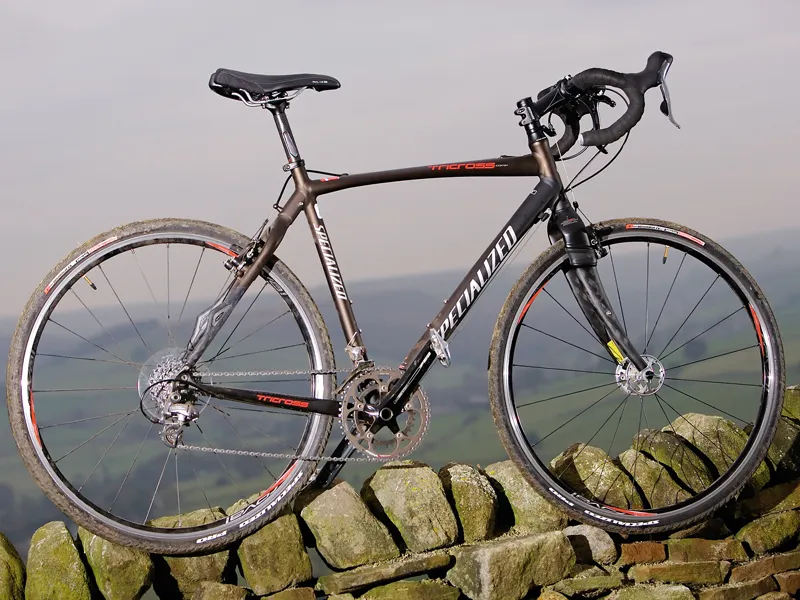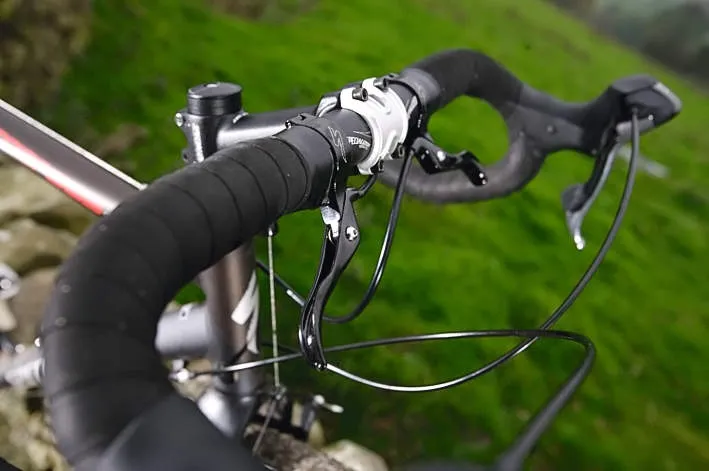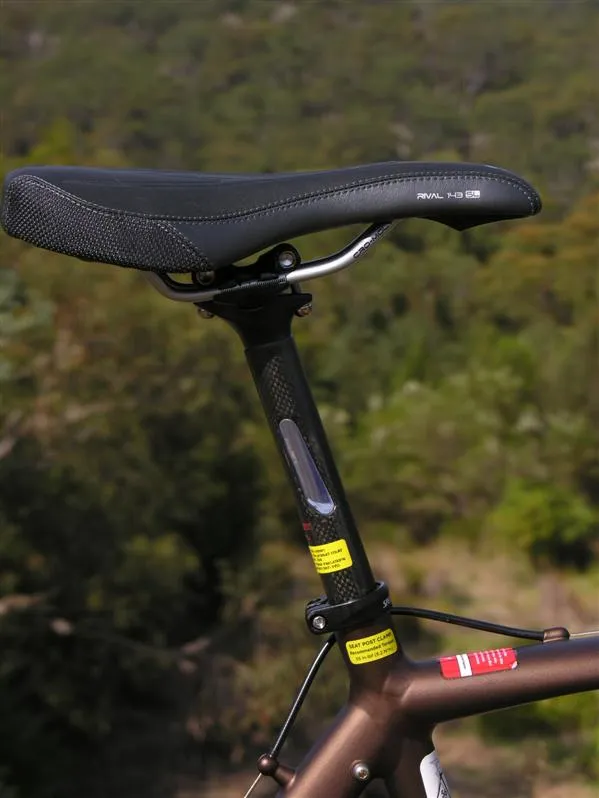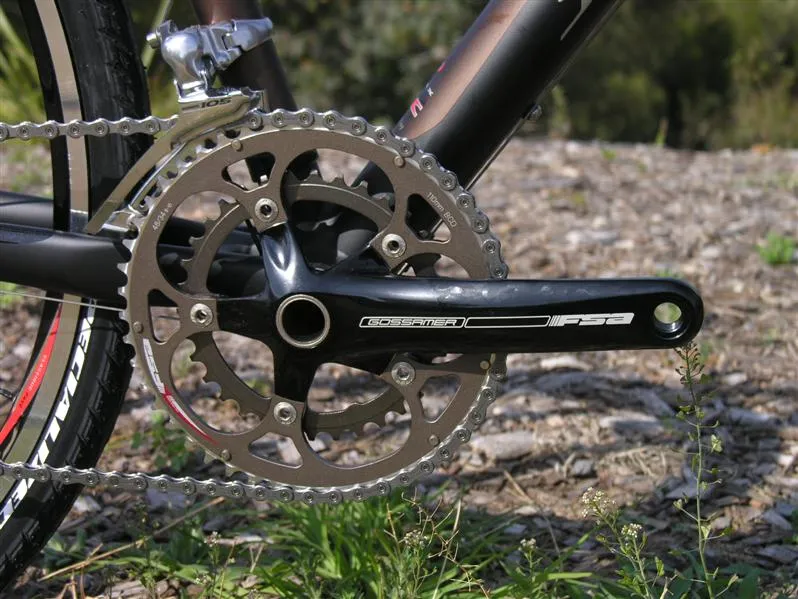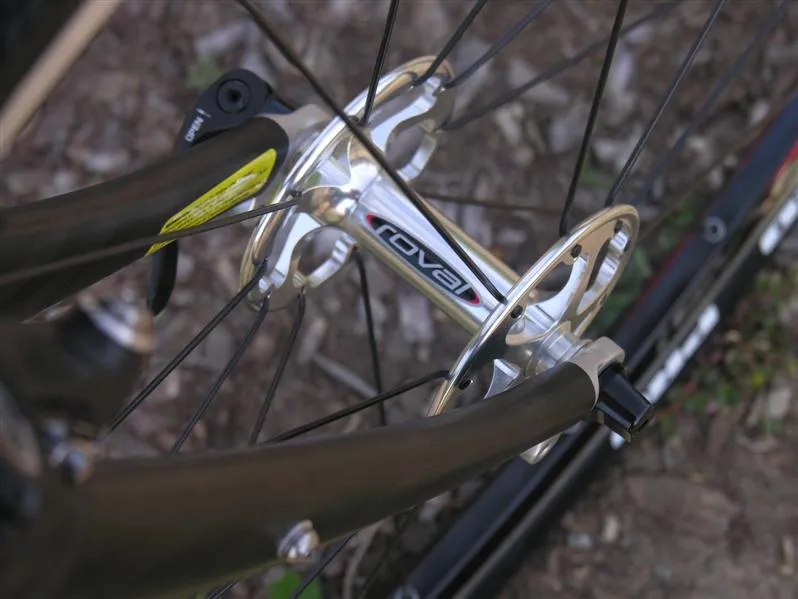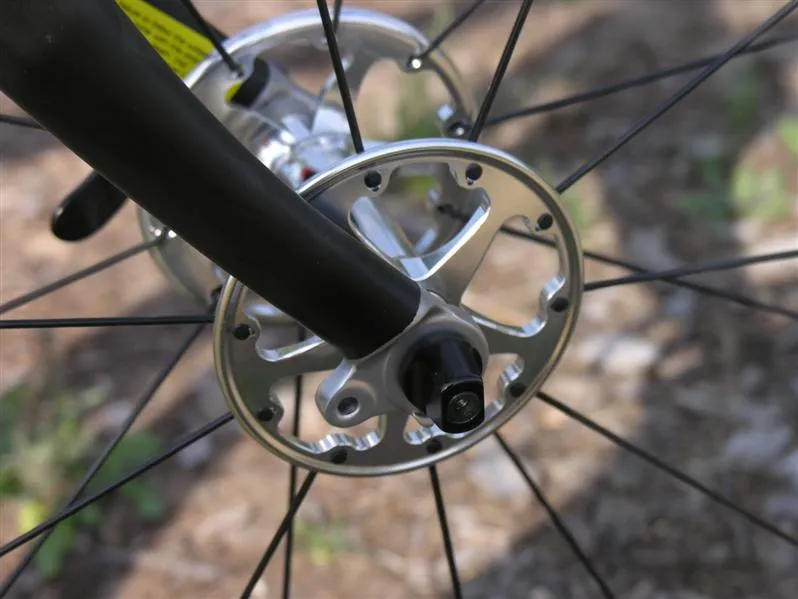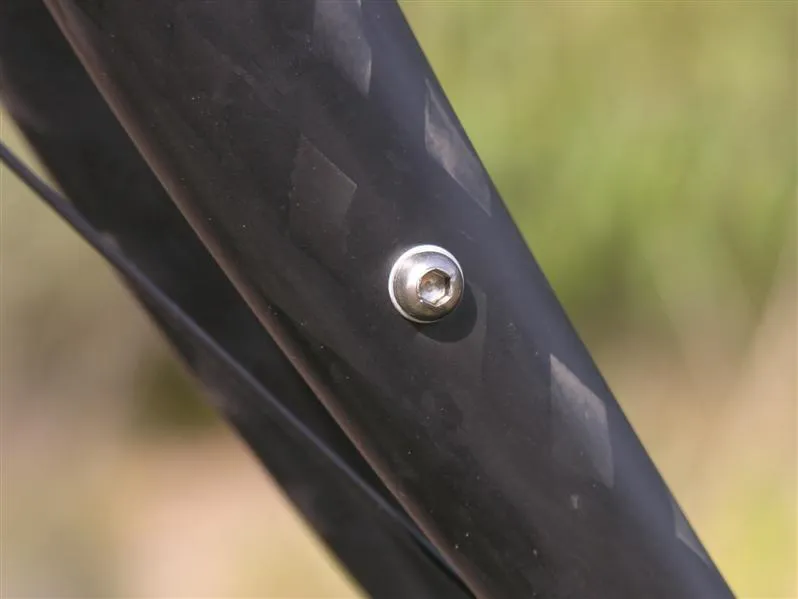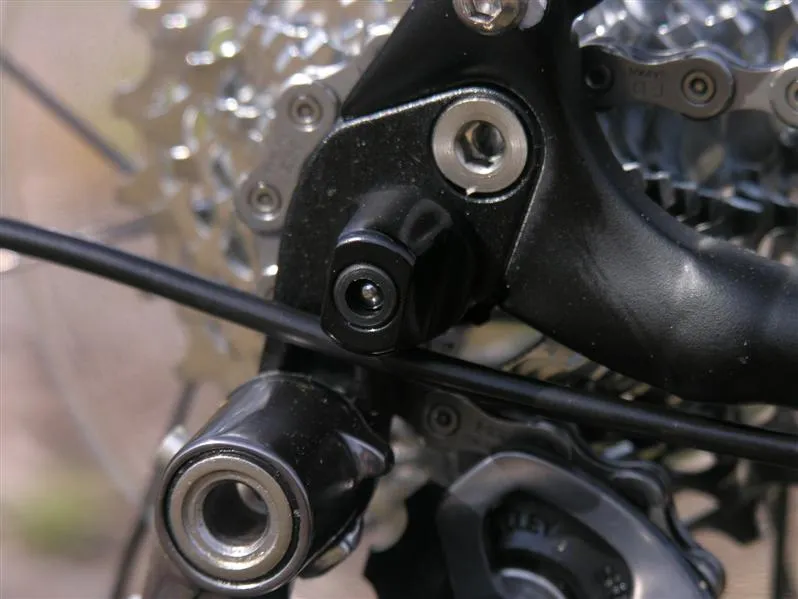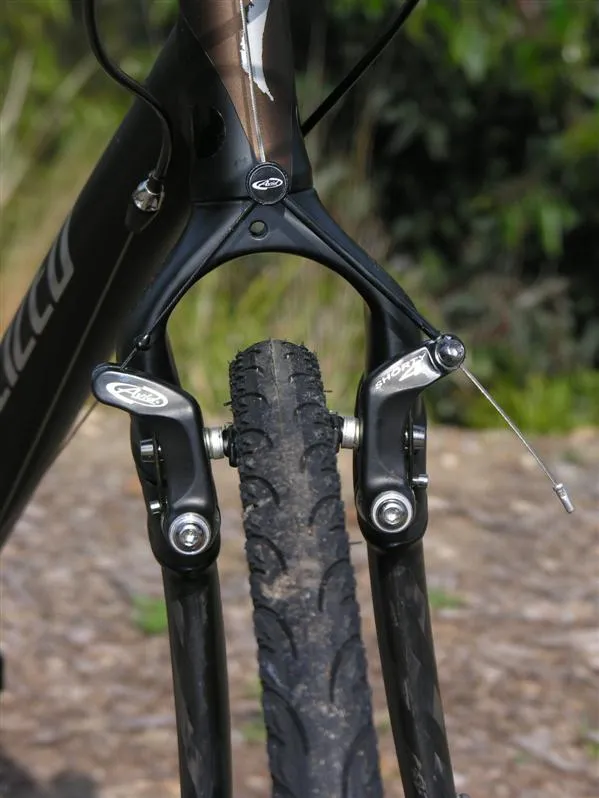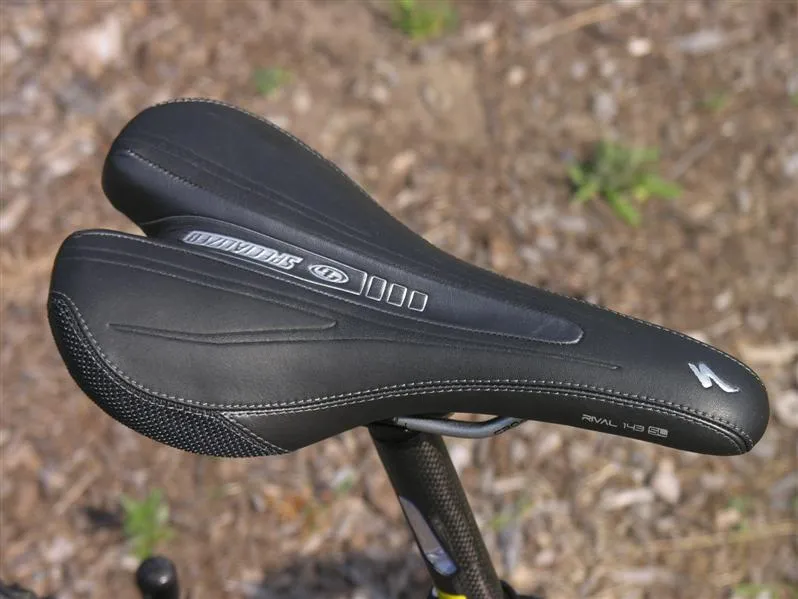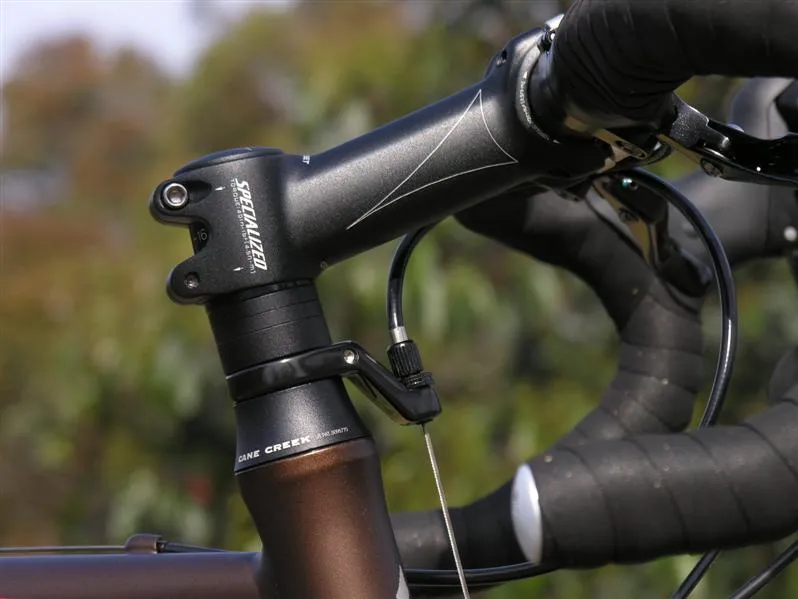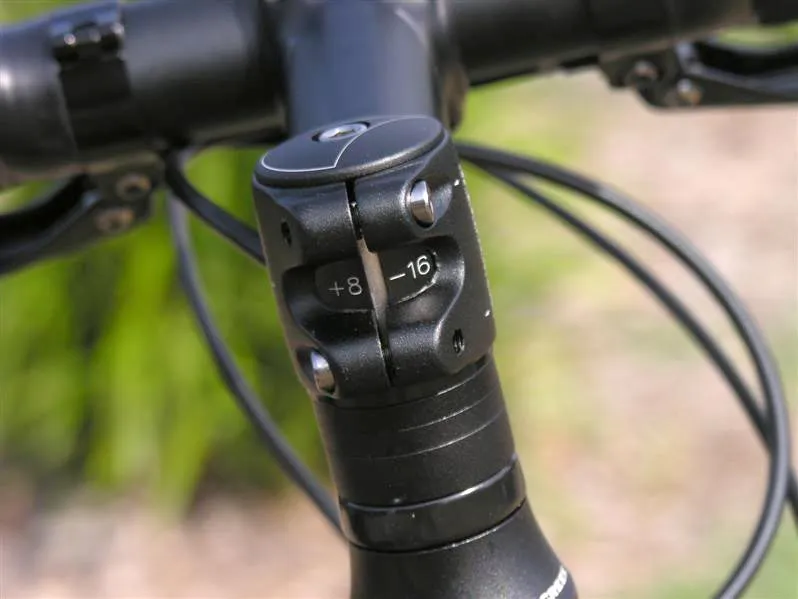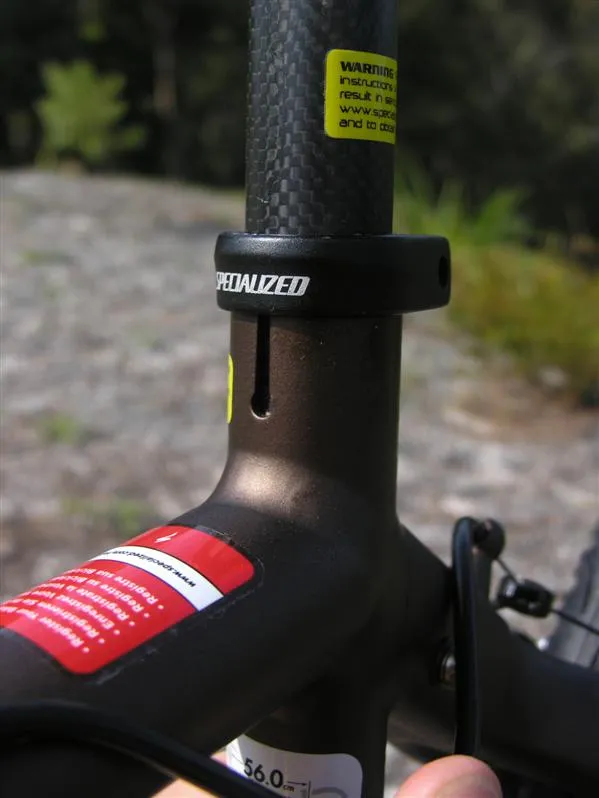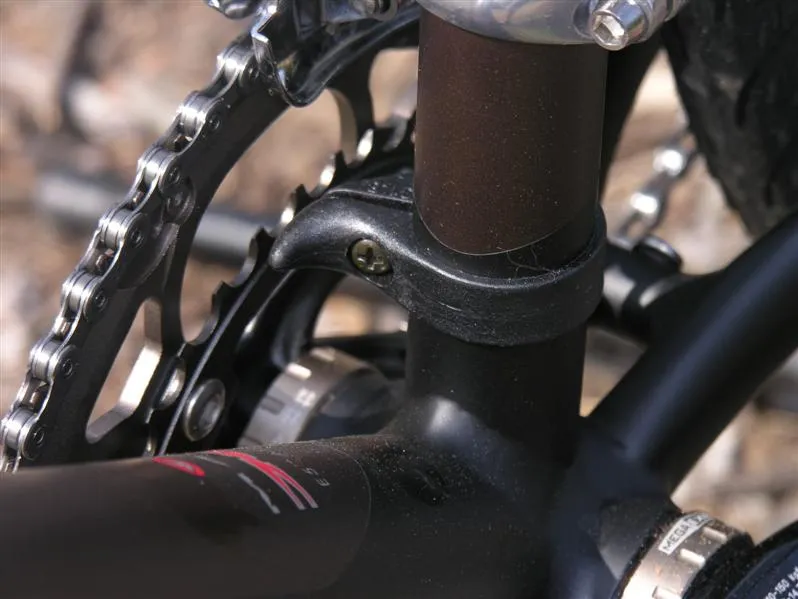Bred from a curious marriage of cyclo-cross race bike and Specialized’s long-distance Roubaix racer, the Tricross is an odd beast. It turned out to be a winner though.
Specialized’s Tricross Comp Double is an amazingly versatile machine that also happens to be lots of fun whatever application you put it to. Its cyclo-cross heritage makes it a tough, comfortable street bike that’s also fit for playing on dirt roads or, of course, making your debut in a cyclo-cross race.
Ride: smooth and speedy on singletrack, slower but fun on tarmac
The initial feel of the Tricross is as unique and slightly odd as the whole concept. While it’s impressively light for a tough, off-road-worthy ride, the short top tube and upright position doesn’t immediately lend itself to maximum speed efforts. Once you stop trying to get stretched and aero, though, it’s fairly easy to breathe from behind the broad bars.
The upright position, slightly compact centre, longish back end and slightly slacker than normal steering really help off-road, though. For a start, you can get right into and stay in the drops and use the proper brake levers (not the ‘suicide set’ on the tops) without breaking your back.
The handling is spot-on for getting through stuff that’s likely to pop the tyres, and the only injury it suffered was a broken saddle after looping it out backwards on a climb. Even in intermediate conditions on essentially slick tyres, we had rides where we’ve held onto the wheels of the fastest local riders on serious singletrack.
Rest assured, they were trying damn hard to lose us, too, because they knew they were screwed as soon as we got to any smooth climbing sections. Whether it’s the jelly sections or just the highly manipulated aluminium, there’s definitely something keeping the bike impressively settled and sting-free for a lightweight race bike running 60psi in the tyres, and we still felt pretty fresh even after multi-hour farm track and rock trail sorties.
The Tricross Comp excels as a dirt-road flyer, too, eating heavier and more sluggish mountain bikes alive, especially on climbs. It's sharp without being nervous and sure-footed without being dull. A truly refreshing change from 26in fat tyres.
However, the dirt does display the Tricross' one big weakness: its brakes are woeful. Go into a corner a bit hot, mountain bike style, and there's just not enough authority there to lose speed before you get into serious trouble: the brakes are vague, mushy and under-powered. That's a shame because it puts a cloud on a very fun bike.
On the road, the Tricross is measurably slower than a pure road-racing bike. Some days, tester Stevenson didn’t mind the extra few minutes on the 32km office run, though, because riding the Tricross meant he got to work in a fresher state of mind. The bike points-and-laughs at potholes and lousy road surfaces Instead of playing ‘dodge the bump’ on skinny road bike tyres, you sail right through them and rely on the big bag of the 32mm tyres and the long wheelbase to cushion the impact.
Of course a mountain bike with slicks also gives you that capability, but you don’t get the Tricross’ taller gearing and the drop-bar riding position that’s faster for long commutes.
Frame: Buzz-killing Italian iron, er, aluminium. And carbon.
The frame is constructed from custom-made manipulated alloy from top Italian pipe producer Columbus, with a stiff bi-axial down tube and a flattened ‘comfy carry’ section under the top tube. Intended to ease running in 'cross races, that also makes it easier to carry up stairs.
Specialized Zertz vibration dampers are added to seatstays, carbon seat post and the big fat curved blade FACT carbon fork to absorb any resonant ‘buzz’ in the frame after an impact. There are rack eyes on the wishbone shaft and dropouts.
The enormous carbon fork looks capable of withstanding direct nuclear attack. There's vast amounts of room under the crown, to the point where you could probably squeeze in a smaller "29-inch" mountain bike tyre, and there are low-rider and mudguard bosses for added versatility.
Tricross frames run big, or short, depending on how you look at it. Oneof ourr test samples was a size L, with a 56cm top tube. If it had been any smaller it would have been too cramped for the man Stevenson, but its 56cm seat tube makes this a tall frame for its size. Fortunately the seat tube extends 5cm above the top tube so that there’s still a decent amount of ’nad clearance. Nevertheless we had to swap out the stock seat post because it ended up so far down that the Zertz insert was inside the clamp. That didn’t seem like a good way to treat a carbon post.
Equipment: good for dirt or tarmac
In terms of kit, the Roval Pave wheels and Borough tyres proved impressively tough without feeling slow, and we loved the wide 44cm bars with extra Bar Phat padding.
Guy was surprised that Specialized had used relatively high cyclo-cross gears on a double chainset rather than a broad ratio triple.
However, Stevenson thought it was a spot-on spec for a bike like this. It provides lower gears without adding the complication of a triple, but not so low that they make life too easy. Playing in the dirt on the Tricross, there's something utterly right about having to dig deep to blast up a steep in 34/28 rather than noodling up in 22/34 on a mountain bike.
An XT Shadow rear mech would definitely bounce and rattle a lot less than the roadie Ultegra, even though it's dark gray finish is kinda slick.
The Avid Shorty brakes are a cyclo-cross staple, but compared to good dual-pivot road bike brakes they felt spongy and vague. This could be because of the extra stop and start in the cable run necessitated by the sissy levers. John in particular never got comfortable with these and preferred to have the bars high enough to brake from the drops when riding dirt. But if you like the extra levers the squishy braking may be a price worth paying. Swings, roundabouts.
Specialized’s Comp-Set stem provides a choice of four angles: -16 degrees, -8, +8 and +16 – through an angled shim. Specialized also provides 20mm of spacers if you need to drop the stem any more. For road riding we used the -16 setting and dropped the stem all the way. In the dirt, we just moved the spacer stack, but taller riders would appreciate the ability to lift the stem further with the Comp-Set shim.
Specialized’s Rival 143 SL saddle is quite deeply padded and while this is initially comfortable it starts to chafe and pinch after a while. Something less bulky would work better.
While you could certainly find pure MTB, cyclo-cross or road bikes with better kit for their specific purpose, you’d be hard pressed to find any bike remotely as versatile.
Summary
It’s rare that mongrel designs deliver more advantages than compromises, but Specialized has really delivered with the Tricross Comp. There are some transmission details we’d probably change, but ignore your initial reservations about the shape and you’ll suddenly realise this is a bike that can hold its own on road and off.
Other region pricing
- USA: USD2050
- Australia: AUD2899
